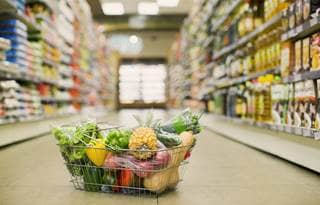If you follow the retail industry, you can’t go a day without reading a headline about the challenges facing traditional brick-and-mortar retailers (for example, the recent bankruptcy of Toys“R”Us). Many of the challenges facing these retailers are the result of what I call the “Amazon effect.” It's no surprise Amazon has turned the retail industry upside down. Mass big-box retailers were first to feel the effects, but the “Amazon effect” is now clearly extending into the grocery retail channels. (For purposes of this article, I’ll consider the grocery retail channel to include grocery, mass, club, Walmart, dollar, and other traditional brick-and-mortar retail channels.)
I recently had the opportunity to serve as a panel moderator in New York City at the Capital Roundtable “Investing in Food and Nutrition Companies.” The panel discussed the challenges facing grocery retailers and the impact they’ve had on private equity investments within the farm-to-fork spectrum. The following week, I was fortunate to attend the Natural Products Expo West where I was able to listen to “The State of the Natural Industry” and participate in the “Disrupted Retail Summit.”After participating in both events, I found a consensus viewpoint regarding the grocery retail channel. Industry experts agree the book has yet to be written, and that the challenges facing the grocery retail industry won’t subside in the near term — especially as Amazon determines how it will manage its investment in Whole Foods and the evolving technology addressing the “last-mile” challenge of delivering fresh food directly to consumers. However, most agree that brick-and-mortar stores will continue to be the key distribution channel for food and beverage companies that are intent on reaching the end consumer with their products.
At both events, there were significant discussions regarding how food and beverage CPG companies and other companies selling products or services to the grocery industry can best manage the headwinds facing this sector. Here are a few highlights:
- Leverage new technologies — CPG companies need to thoroughly evaluate the strategic usage of technology. The most successful companies are leveraging predictive analytics for new product development, production planning, logistics, and marketing. Similar to the grocery retailers, CPG companies are developing sophisticated predictive analytical algorithms to monitor consumer buying trends.
- Know your consumer — CPG companies must not only study the demographic of their target consumer (e.g., millennials vs. boomers), but also the psychographics. It's not only critical to know “who” will buy, but also “why” they’ll buy. CPG companies must evaluate their online marketing strategies and social media-based analytical information to best adapt their products to drive demand.
- Bring innovative ideas and data — Grocery retailers prefer CPG companies that are proactive regarding product development and bringing actionable ideas to the table. They're looking to partner with CPG companies that know their consumer and use “push” rather than “pull” product development strategies. The relationship between the CPG and the grocery retailer was historically about promotions, but CPG companies create the currency to drive demand through a strong partnership with the grocery retailer. CPG companies need to provide grocery retailers with measurable data to collaboratively help them identify opportunities to solve problems for the retailer, and most importantly, the end consumer.
- Embrace omnichannel distribution — Reaching the consumer through multiple distribution channels is the new norm. Most industry experts agree that traditional “brick-and-mortar” grocery channels won't go away anytime soon; however, in order to be successful, grocery retailers must also have an online sales platform that provides a seamless customer experience. CPG companies need to keep this in mind as they're developing products and packaging for the end consumer. CPG companies also need to evaluate their own omnichannel distributions opportunities.
In summary, the grocery retail industry is likely to continue facing significant disruption. This disruption will require CPG companies to re-evaluate their existing relationships with their retail customers and likely force CPG companies to reassess their human capital talent as well. They’ll want to ensure employees in sales, marketing, and information technology can adapt to these changing trends. However, skillfully managing this disruption can create valuable opportunities. The CPG companies with the most skilled talent will be in the best position to leverage new technologies to make a direct connection with their consumers. Subsequently, leveraging the feedback received from consumers to bring innovative ideas to the grocery retailer will put them in the best position for success.





